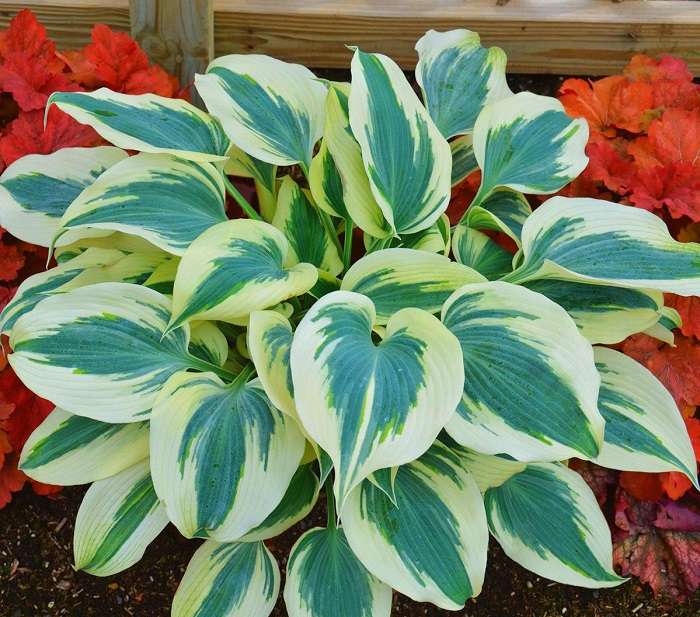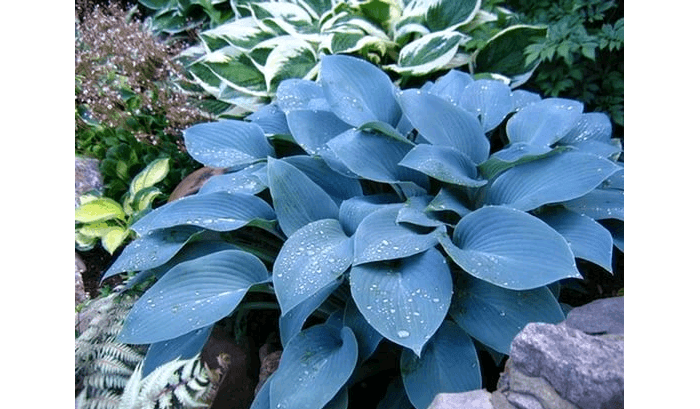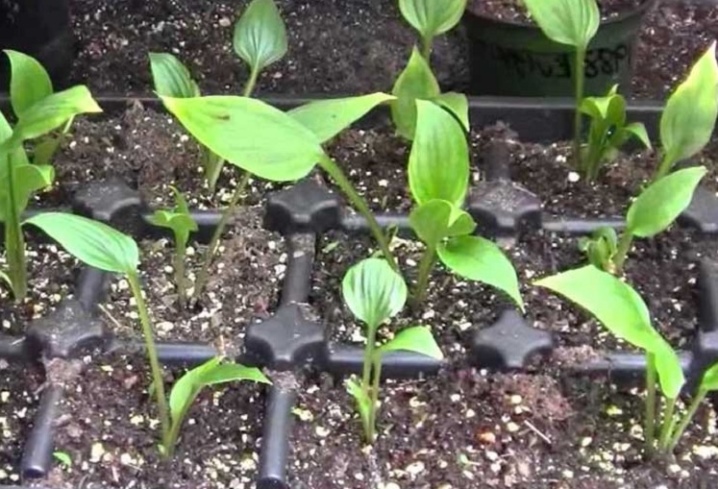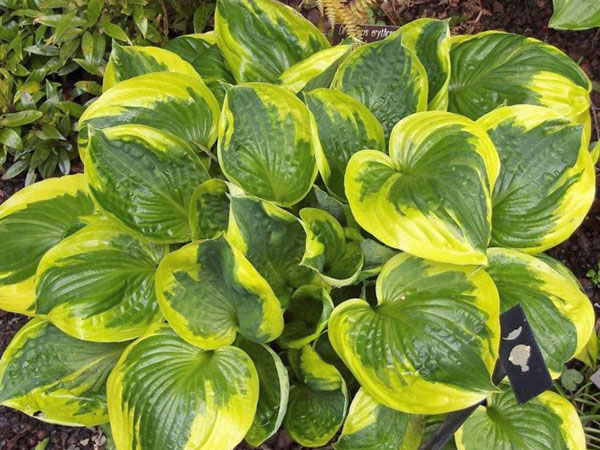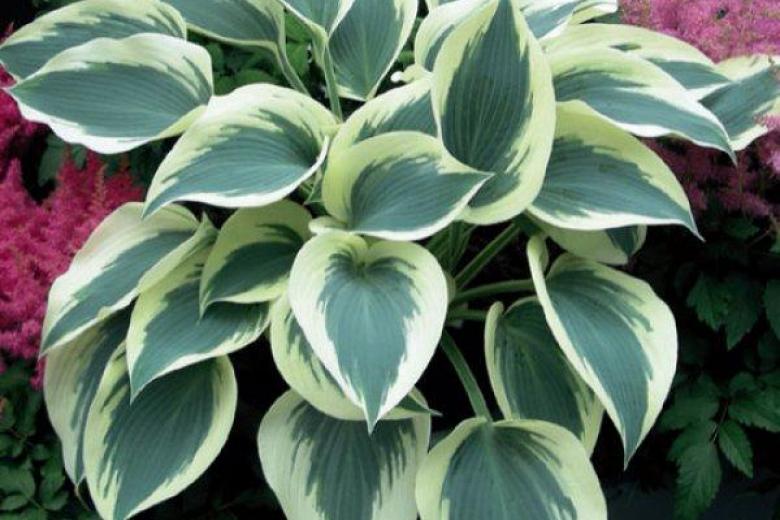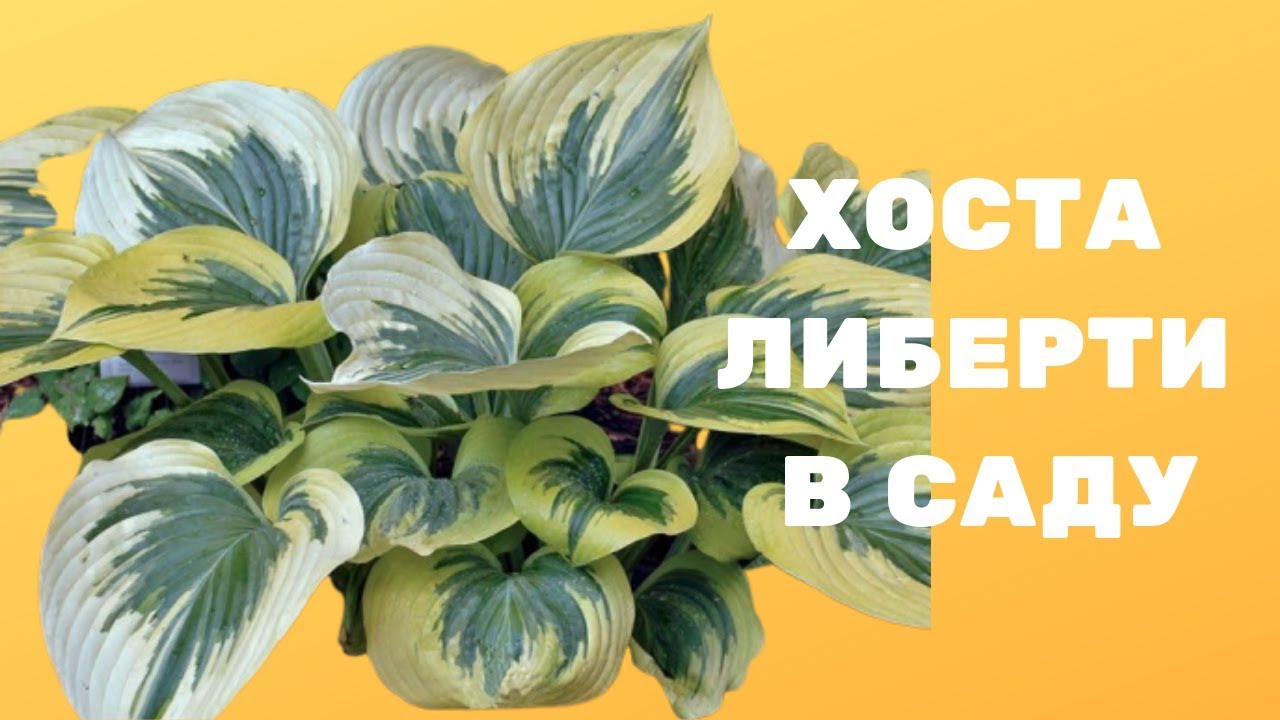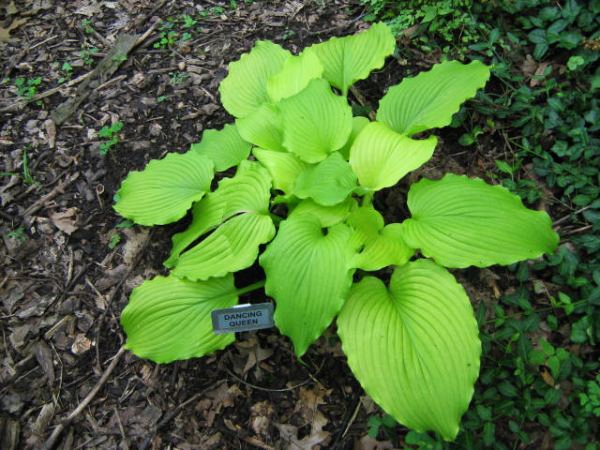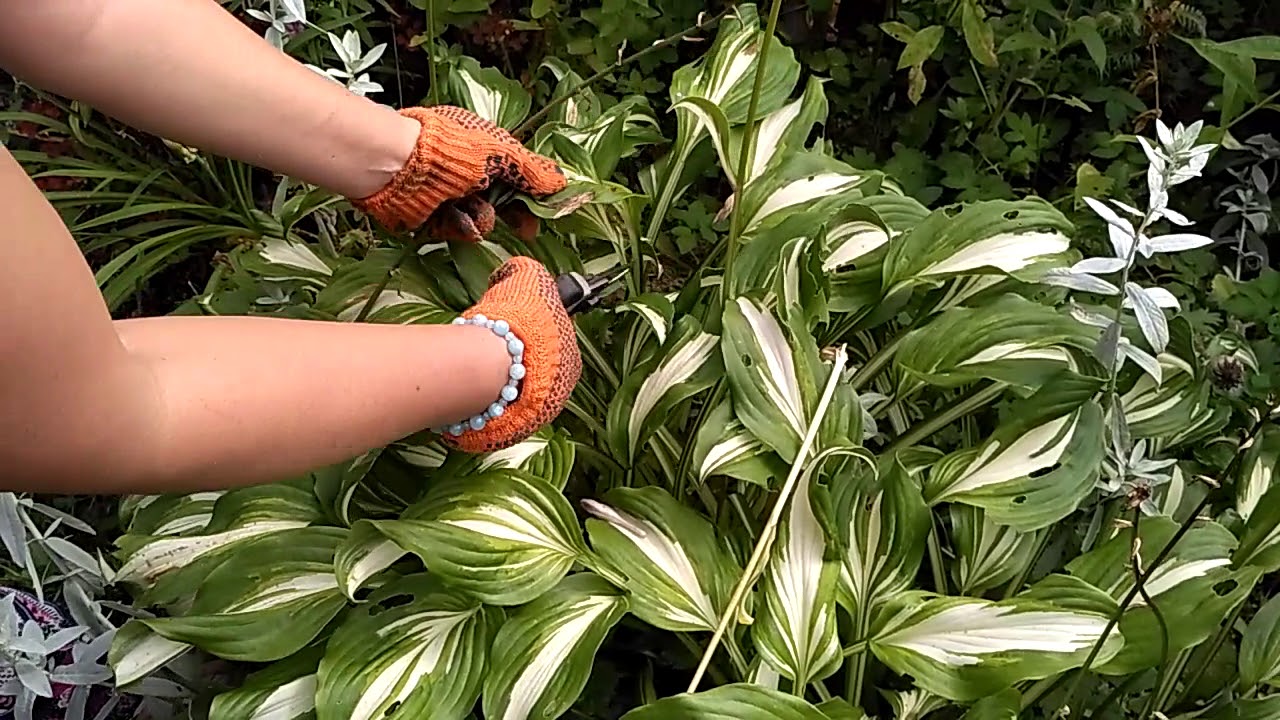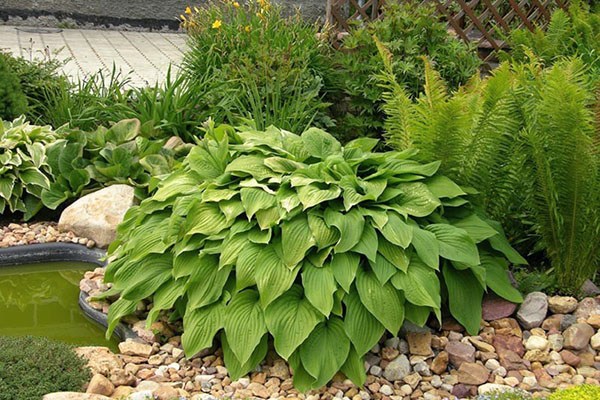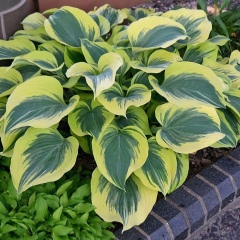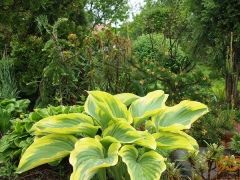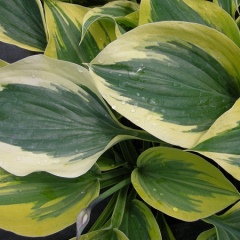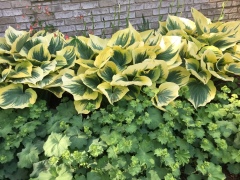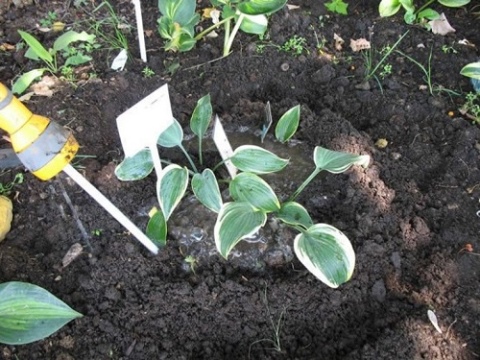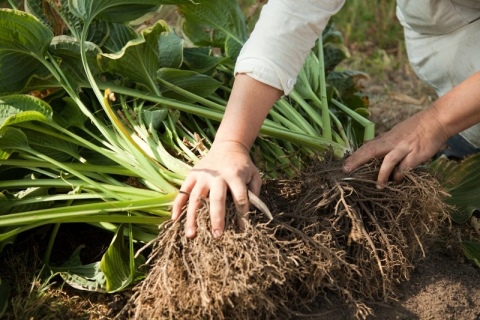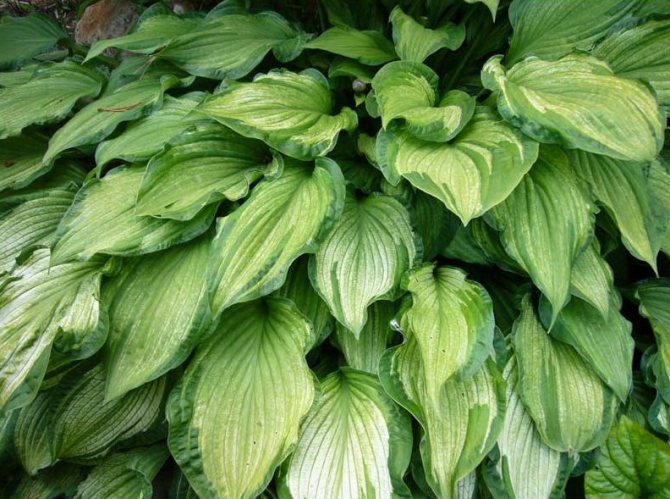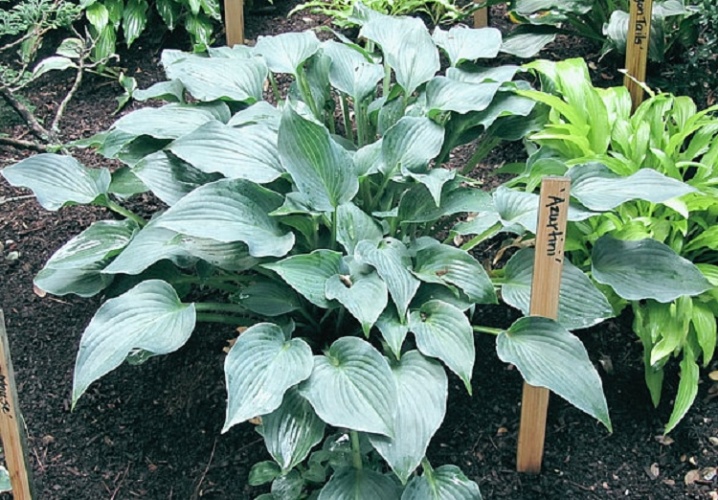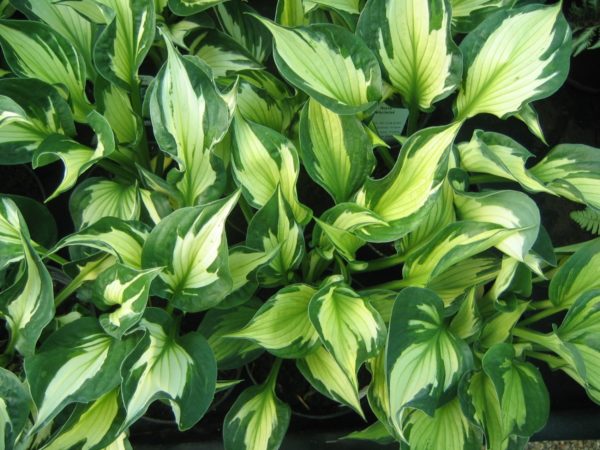What do different kinds of hosts look like?
Hosta is a not very numerous (about 40 species) genus of plants of the lily family. Outwardly, these are low rosette perennial plants: hosts are dense bushes formed by basal leaves. They have thickened rhizomes with numerous filamentous roots. They grow in shady forests on moist fertile soils.
The flowers of the host are funnel-shaped, on towering peduncles, varying in color from white to purple. Not devoid of beauty, flowers are still not the main decorative advantage of the host. Their decoration is graceful leaves, collected in dense basal rosettes, with a diameter of 20 to 100 cm.In different species and varieties of host, the leaves differ in size (from miniature, as long as a match, to almost half a meter), shape (from narrow-lanceolate to heart-shaped), color (from light and dark green to gray-blue). The leaf blades of some host species and varieties have yellow and white stripes or stripes of various widths and shapes. The edges of the leaves are wavy, and the tip is elongated and curled.
The host is distinguished by a rare stability of the decorative effect - from the moment the leaves unfold in May to their wilting in October. It is simple in agricultural technology, undemanding in care, undemanding to heat and frost-hardy, easily multiplies. All hosts are distinguished by rare shade-tolerance and even shade-loving. This is almost the only plant whose flowering can be observed under the canopy of trees at the end of August. Hosts are highly resistant to pests and diseases, they tolerate transplanting well, are non-aggressive, and can grow in one place for many years. The most common in gardens are 7-9 host species and many of its variations and varieties.
Below you can see the photos and names of host species, as well as their descriptions.

From the photo and description of this host, it immediately becomes clear why this plant got its name - its green leaves have a narrow white border.
Peduncles up to 30 cm tall, flowers up to 6 cm long, lilac-purple. Blooms in July and August. This hosta is quite common among flower lovers, hardy and unpretentious. Grows best in light partial shade when fully lit in the morning and evening.
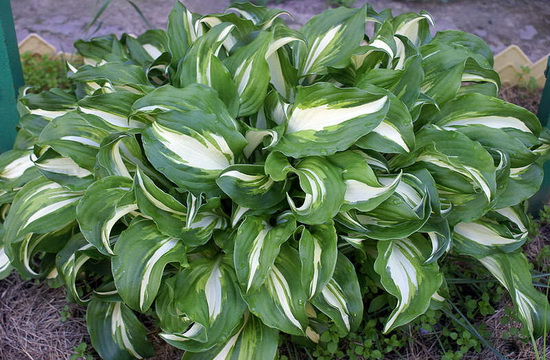
As you can see in the photo, this type of hosta has leaf blades with an uneven wavy surface and a slightly curled top.
The petiole is light, grooved, slightly winged. The leaf is green (16 x 10 cm), with an uneven longitudinal white center. The flowers are funnel-bell-shaped, light purple up to 5 cm long. Peduncles up to 80 cm tall. Blooms in August.
Description
Hosta "Empress Wu" is the largest variety, which stands out among other varieties in its size. The plant belongs to the large Asparagus family and bears the name of the only female empress who ruled China. The shrub belongs to herbaceous perennials and prefers to grow near rivers, at the edge of a forest or at the base of mountains. In height, the giant bush reaches 1.5 m, and in width it can grow up to 2.5-3 m. Erect leaves form an extensive rosette.
The structure of the leaf plates is corrugated, in the spring they are covered with a light waxy coating, giving them a matte green-blue tone, and in the summer they acquire a dark green color. "Empress Wu" has an inconspicuous, but at the same time exquisite flowering. Peduncles are tall, with racemose inflorescences, while the buds have the shape of neat funnels, often located on one side. They are painted in a pale lavender color. Abundant flowering, falls mainly in July. The hosta looks most impressive in the third year of life, when the rosette is fully formed, and the flower arrows are covered with numerous delicate inflorescences.After the end of flowering, fruits are formed on the peduncles - triangular capsules, inside which black seeds are placed.
How to plant hosts and how to care for them
Before planting the host, you need to select the correct area with sufficient light. The most suitable for the host are moisture-consuming, humus loams. Many golden forms develop best in areas that are only illuminated in the morning hours. With the right lighting, the hosta bushes grow rapidly, have dense, neat rosettes, and the color of the leaves is the most attractive. If there is the possibility of frequent watering and regular maintenance, then the host can be planted at any time from spring to September. The most painless transplant occurs in May and August. Further care consists in weeding, dressing, regular watering with a lack of atmospheric moisture.
A prerequisite for growing a host is an increased content of organic matter in the soil. It is most advisable to apply rotted manure in the fall in the form of mulching the soil around the bushes with a layer of 5-7 cm. This will at the same time improve the wintering conditions of the plants. In the spring, the mulch is shallowly covered. Mulch can be scattered under bushes at the beginning of summer, then, in addition to fertilizing, it will increase the humidity of the air environment, which is very useful for hosts.
And how to take care of the hosts at the end of the warm season? In late autumn, the withered leaves of the host are removed with pruning shears. At the same time, it is good to sprinkle the bushes with peat, which is useful, especially in the northern regions. Many host species develop rather slowly and are not very decorative up to 4-5 years of age. The most elegant are adult bushes, usually after 7-8 years of vegetation.
Hosts are propagated mainly by dividing overgrown bushes. It is better to do it in the spring, before the leaves are fully developed, or in the fall in September. Old bushes usually disintegrate easily.
Hosts are appropriate in rocky gardens, near water bodies, they go well with ferns, Japanese anemone, astilbe, irises, bathing suits.
Hosta Syboldiana. Hosta Siebold: features, varieties, agricultural technology
Hosta is an unusual plant that emphasizes and combines different types of flowers, completing the composition. At the same time, it is not a faded background, because it itself has rather high decorative properties. Hosta sieboldiana looks beautiful at any time, therefore it is the favorite of many landscape designers.
Description and characteristics
The plant belongs to perennials and belongs to the asparagus family. In natural conditions, it can be found in Japan (Honshu Island). The bush got its name in honor of the famous botanist Philip Siebold. The shrub has wide leaf plates with a rather dense structure, their length is about 30 cm, and their width is up to 25 cm.The leaves are covered with a light bluish bloom, their shape is heart-shaped with a well-pronounced ribbing.
The color has a bluish-gray tint, which is why the plant is referred to as blue hosts. The bush produces low (about 40 cm) peduncles, on which light lilac funnel-shaped flowers are formed, having a length of 5-6 cm. Hosta Siebold blooms in July, the inflorescences are almost buried in green leaves.
At the end of flowering, triangular small fruits with black seeds ripen on them. The root system of the plant is low-branched, compact in size.
Varieties
The most popular and beautiful representatives of the Siebold hosts are:
"Elegance" is a very beautiful plant, with grayish-blue leaves and light purple inflorescences, the bush reaches 65-70 cm in height, and up to 90 cm in width;
"Francis Williams" is also quite large in size, the leaves are uneven in color - the edges are edged with a yellow-cream stripe, and the main color is gray-blue;
Halcyon - a variety that was bred as a result of hybridization of Hosta sieboldiana and Hosta tardiflora, it belongs to low crops, the leaf plates are distinguished by a beautiful bluish tint;
Hercules is a tall shrub with large blue-green leaves and white inflorescences that bloom in June;
Semperaurea belongs to a fairly large variety, with broad leaves painted in yellow-green hues.
Landing
The growing season of the hosta begins somewhat later than other crops, so it can be easily planted in late spring or early autumn. The plant is shade-loving, which should be considered when choosing a site. Khosta Siebold prefers light, fertile soil with good moisture. Clay and sandy soil is not suitable for growing hostas. The optimal time for planting is in the evening, preferably after 18.00, when the heat subsides and the temperature drops slightly.
Landing is carried out as follows:
- planting holes are wide and deep enough;
- a little humus is poured to the bottom;
- to increase the air permeability of the soil, you can also add a small amount of peat;
- perlite should be used as drainage;
- a little water is poured into the recesses and a seedling is placed, but it must be positioned so that all the buds are above the ground;
- the plant is watered and covered with soil;
- a layer of mulch (sawdust, bark or peat) is applied on top.
The distance between the holes is made based on the parameters of an adult plant, 30-80 cm. When planting in autumn, especially if the winters are cold, the seedlings should be covered with agrofibre for the winter. Khosta is a frost-resistant crop, and adult plants are quite capable of hibernating without shelter, but young bushes can freeze slightly.
How to care?
Caring for the plant is not difficult and, moreover, does not take much time.
- It is worth watering the bush in the morning or in the evening, but so that the lower leaves have time to dry out by night. Wet leaf plates lure slugs, which damage the plant. In addition, watering does not need to be carried out on the leaves, because they are covered with a special film that can be washed off. At the same time, the plates lose their protection and attractiveness - the blueness of the cover.
- It is enough to feed the flower 2-4 times a season. The last time the plant is fertilized is in August. Complex feeding is suitable for Siebold's hosts; they should be applied after the plant has been well hydrated and preferably before 11 am. In early spring, complex fertilizing with trace elements is applied, during flowering - fertilizers with potassium and phosphorus, and in autumn - potassium sulfate.
- At the end of flowering, it is worth cutting off the arrows that do not adorn the plant. In addition, the plant spends energy to ripen the seeds.
- For the winter, the bush is cut off, you do not need to cover it, since the species is frost-resistant. It is enough to pour a layer of dry foliage on it.

